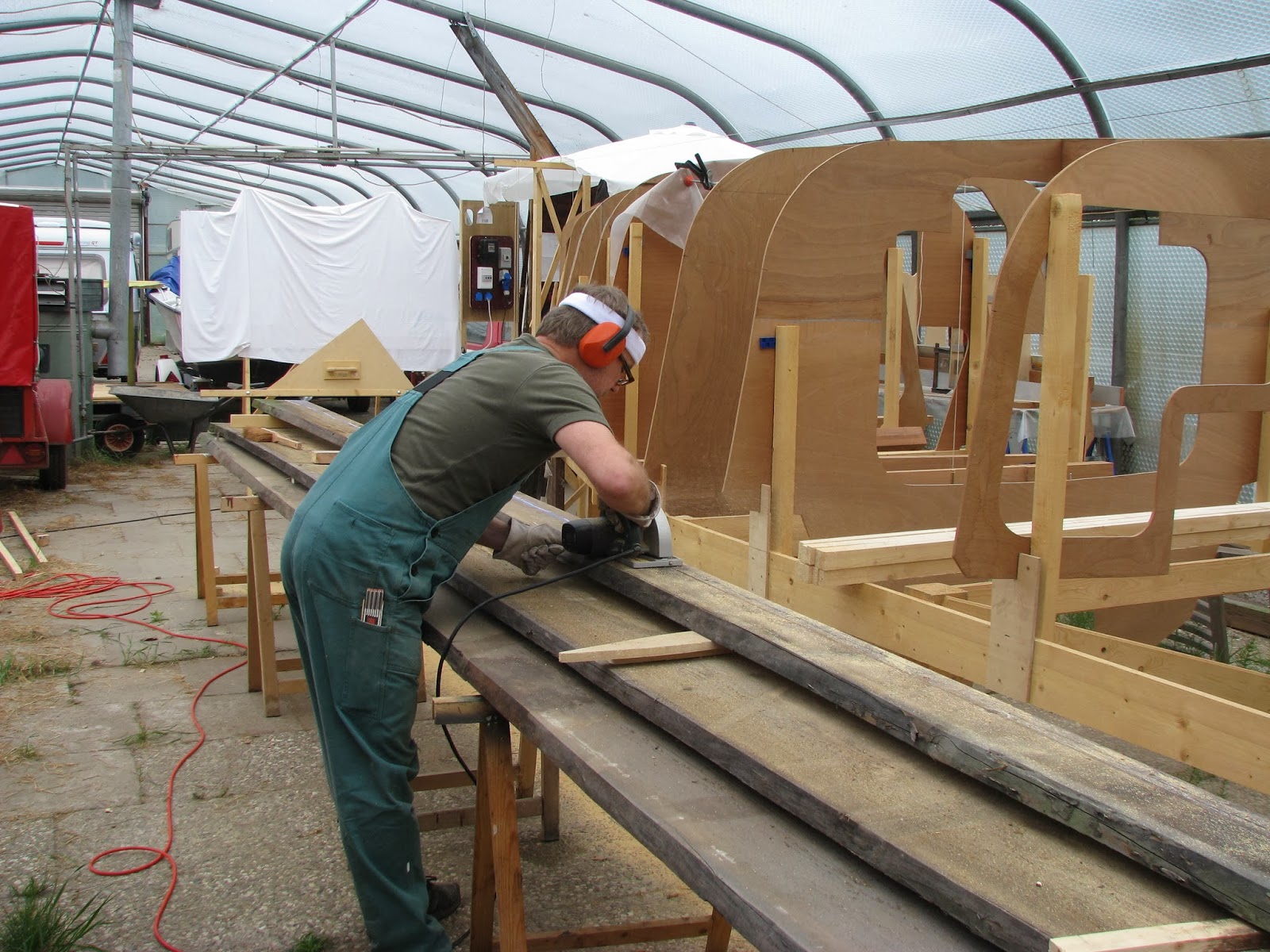First step was making a casting model from wood. Then the casting mold has been molded from the model by plaster.
When the plaster mold is dry enough for casting the lead it is set into a bed of sand. The feedthroughs for the S/S rods are made by using short water pipe pieces made of galvanized steel. The pipe pieces are fastened with wood screws and flat washers to the plaster mold.
For casting the bulb slabs I installed a very simple lead melting furnace.
And here you see the result of my first attempt. Not that pretty but usable.
Will covered with a thick layer epoxy anyway.
Working time been invested: 459 hours
This blog will take you along the different steps of building a 23 foot dropkeel sailboat. The DIDI 23 is one of the available designs for the amateur builder designed by Dudley Dix. The boat is built as a radius chine trailer sailer from plywood with bulb dropkeel.
ABOUT ME
I am 64, married, have two adult children and working as engineer for rf techniques at a physical research centre of the Helmholtz Association. I live close to the Elbe river in a suburb of Hamburg, Germany.
Sunday, 30 December 2012
Sunday, 16 December 2012
Inserting The Last Two Keel Bulb Rods
In order to insert the last two keel rods exact in parallel regarding the other four, I prepared a gauge as shown.
Sunday, 18 November 2012
Shaping the Keel Foil
Over the winter time I will concentrate on working at the keel foil and the lead bulb.
On the photos you see the keel foil hanging in my shed for finishing the profile.
Working time been invested: 430 hours
On the photos you see the keel foil hanging in my shed for finishing the profile.
Working time been invested: 430 hours
Sunday, 21 October 2012
Skeleton Almost Finished
The temperatures are falling daily. It is almost to cold for working with epoxy resin. The last Action in the greenhouse this year is fixing the sheer cleats to the bulkheads. The sheer clamp must wait until next spring.
Working time been invested: 417 hours
Friday, 10 August 2012
Thursday, 2 August 2012
Bulkhead Re-Alignment
Frequently the bulkhead alignment is controlled by guideline, plumb-line and tube level and readjusted by tension belts if necessary.
Saturday, 16 June 2012
Sunday, 10 June 2012
Sunday, 3 June 2012
Glueing Keel Foil
In between, I dedicate myself again to the keel foil. I glue the stainless steel rods for fixing the lead bulb into the foil segments. After that I bring the foil segments for glueing into a specially prepared fixture in line.
Friday, 25 May 2012
Stringer Yield
The yield when cutting the stringers was very dissatisfying. I had bought the larch as best quality (for 1,750 € /m³) at a boat timber merchant.
After the wood has been cut into batten and the cracks and knots were cut out, I measured, weighed, calculated and the following turned out:
- Only 31% of the larch was useful to stringers. The rest is good only for the fireplace.
- The cost for the self-cut and planed 32x32mm ² stringers are 4.70 €/m!
Quite expensive!
I am currently looking for alternatives, because I still need about 90m 23x23mm² stringer.
I am currently looking for alternatives, because I still need about 90m 23x23mm² stringer.
More Knots, Shakes and Splint than Expected
When sawing the stringers I recognize that the larch has more knots, shakes and splint than expected. I must cut the six meter long battens into pieces. Most of them just one to two meters long.
Yield of faultless material. Batten are just one to two meters long and have to be scarfed to 7.5m length later on.
Knot to be removed.
Removed knots, shakes and Splint.
Yield of faultless material. Batten are just one to two meters long and have to be scarfed to 7.5m length later on.
Sunday, 13 May 2012
Stringer
I wonder some time what timber I should choose for the stringer. Dudley Dix suggests spruce. I decided to take sibirian larch. It has a higher bending strength and durability than spruce.
The larch I bought has a density between 659 kg/m³ and 796 kg/m² (720 kg/m³ in average) at a wood moisture of 12%.
Wednesday, 2 May 2012
Saturday, 21 April 2012
Saturday, 7 April 2012
Move to My Greenhouse Shipyard
Through the winter time I was just able to work little things in my basement boiler room. But now it should really start.
Today I begun to setting up the prepared bulkheads.
Today I begun to setting up the prepared bulkheads.
Subscribe to:
Comments (Atom)





















.JPG)







